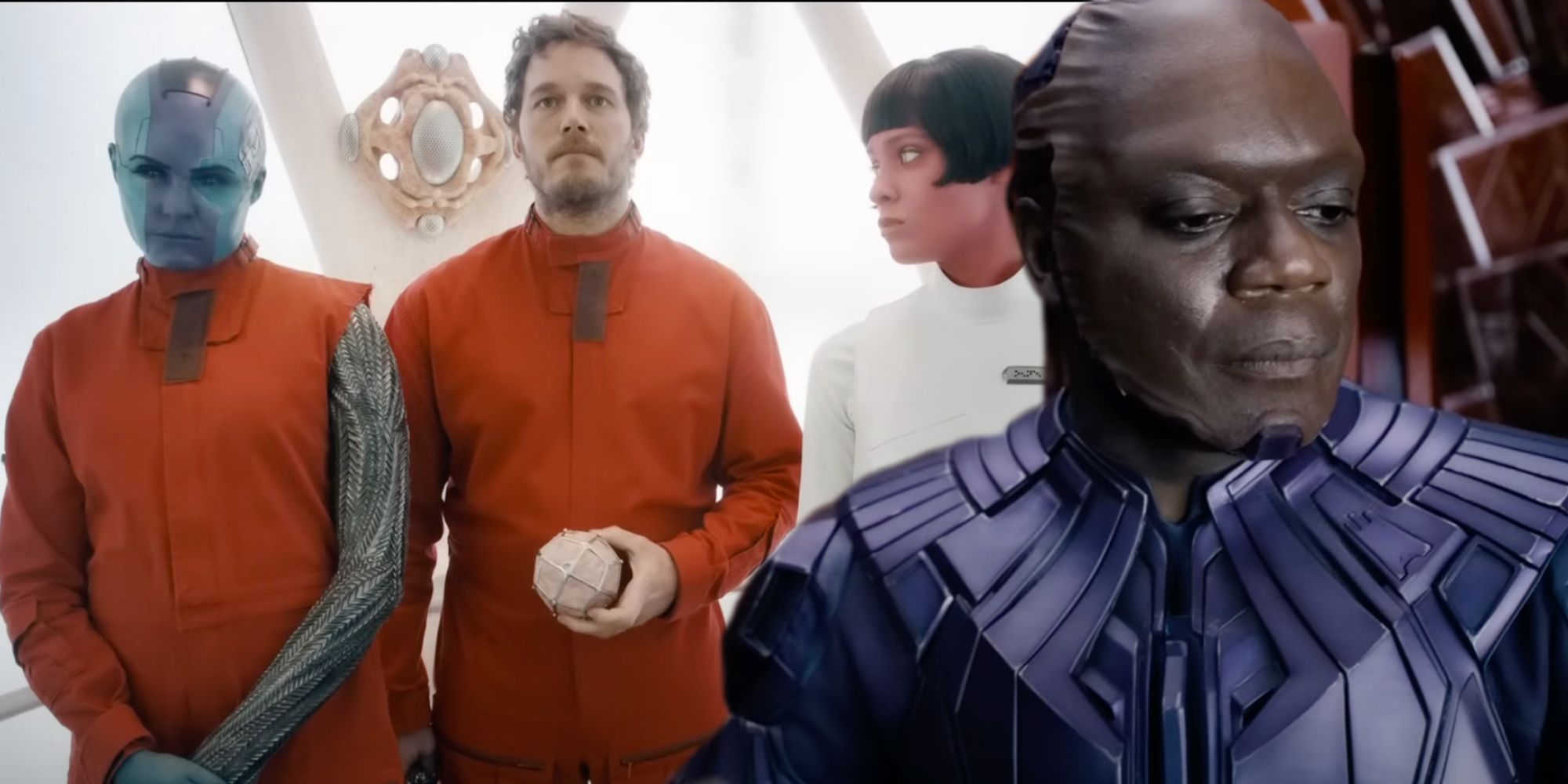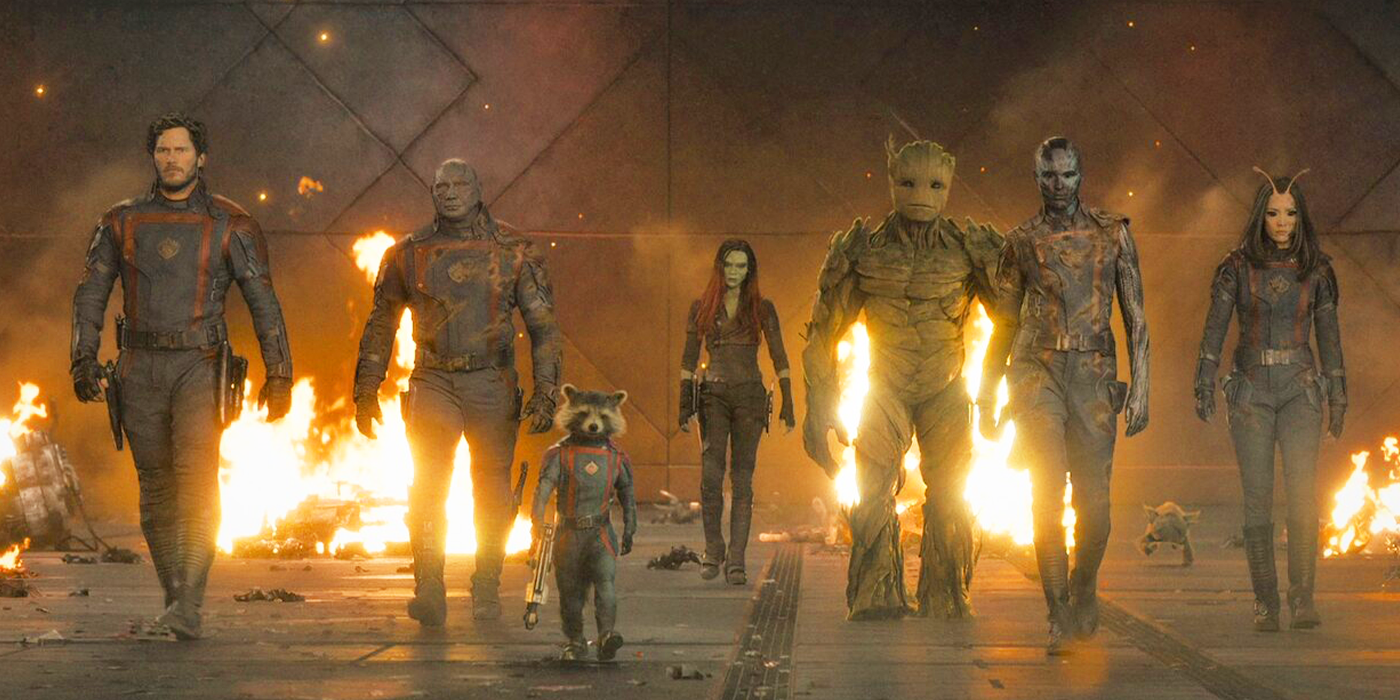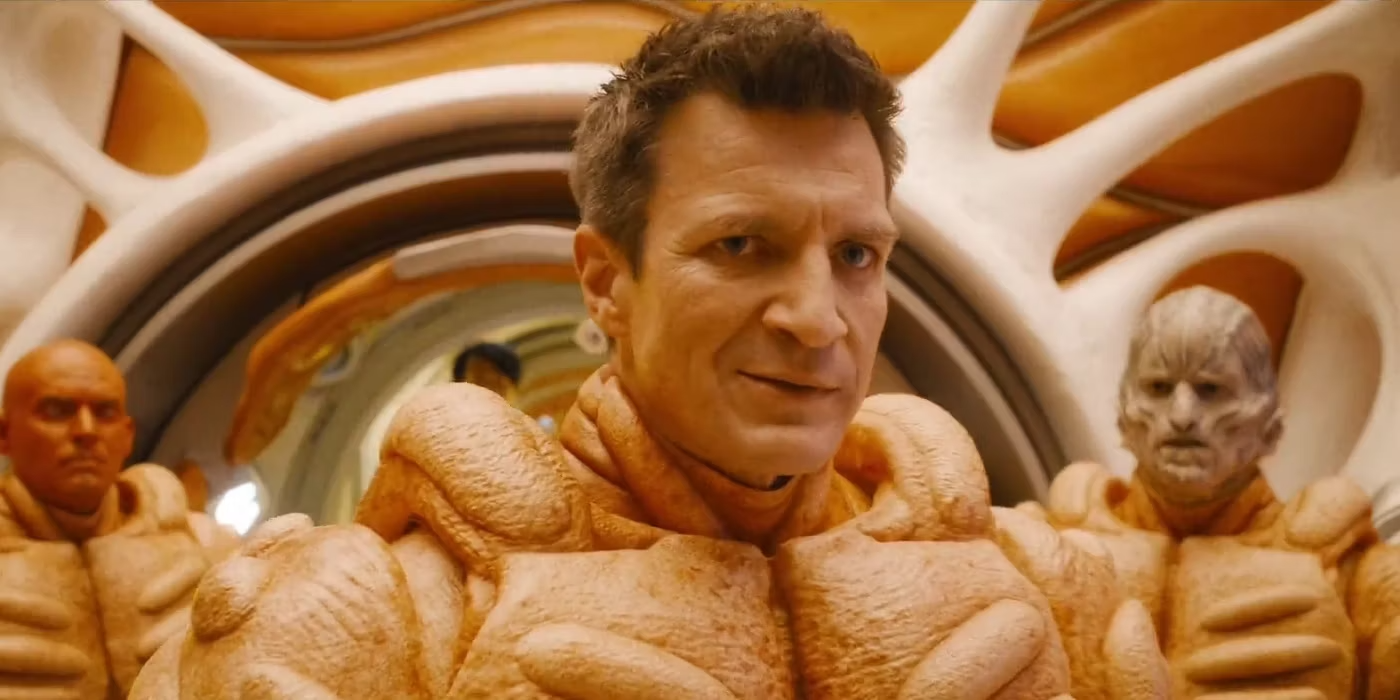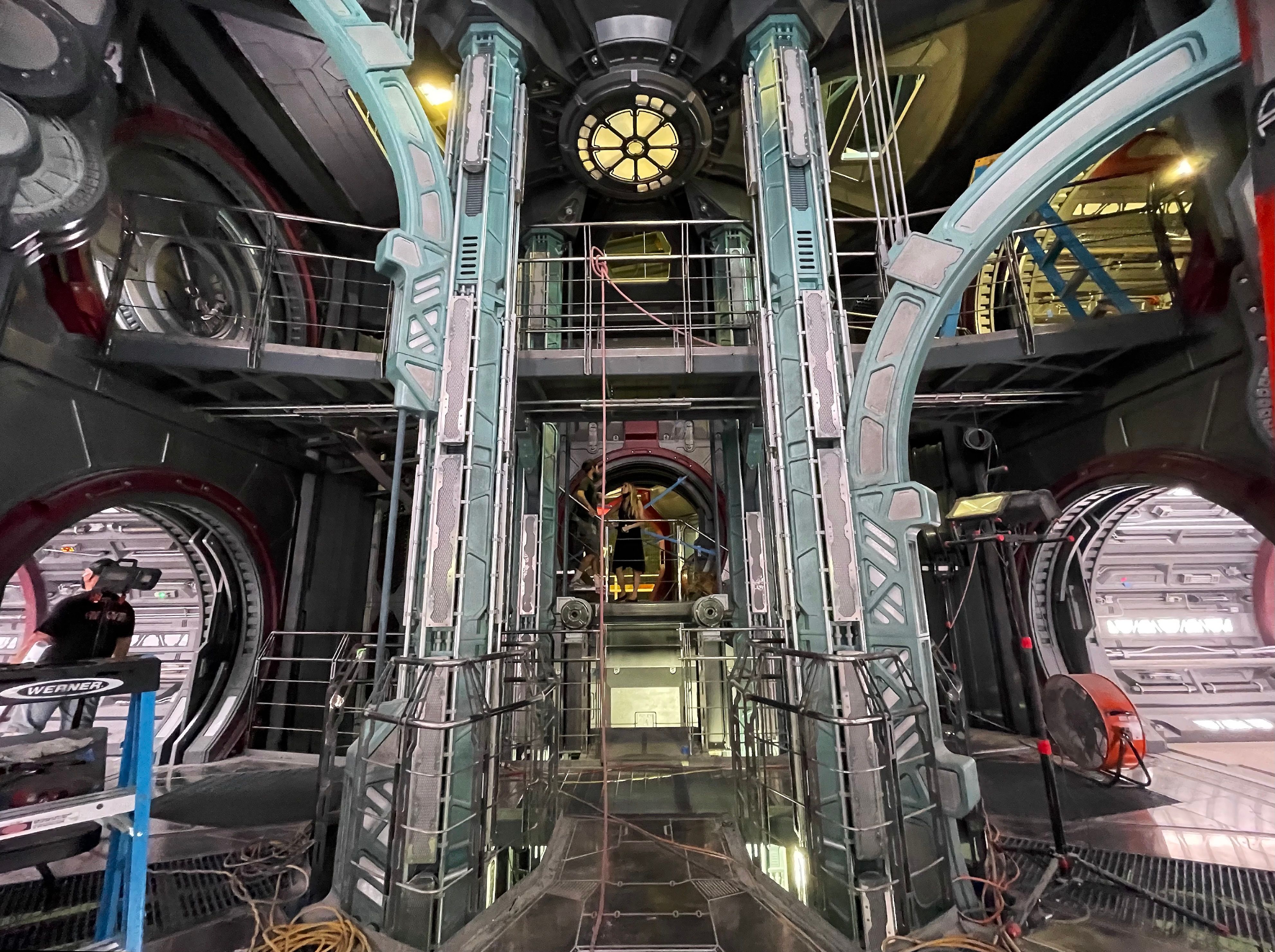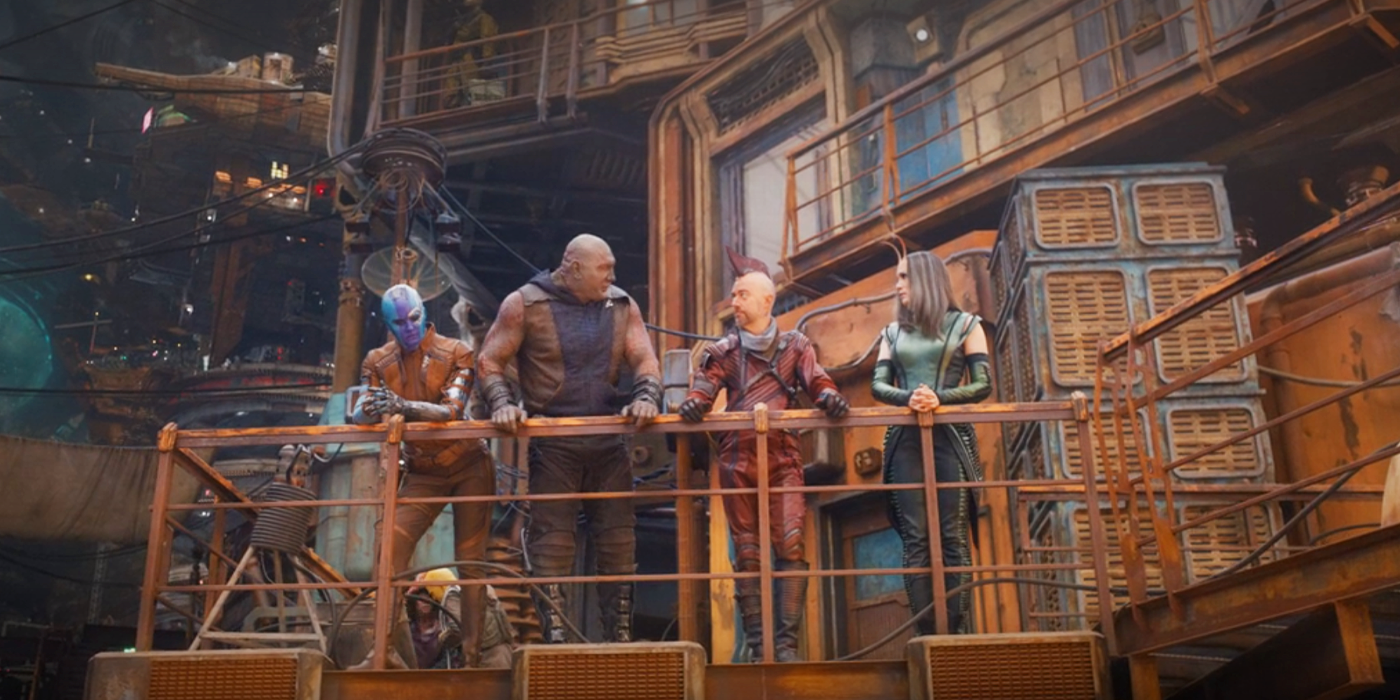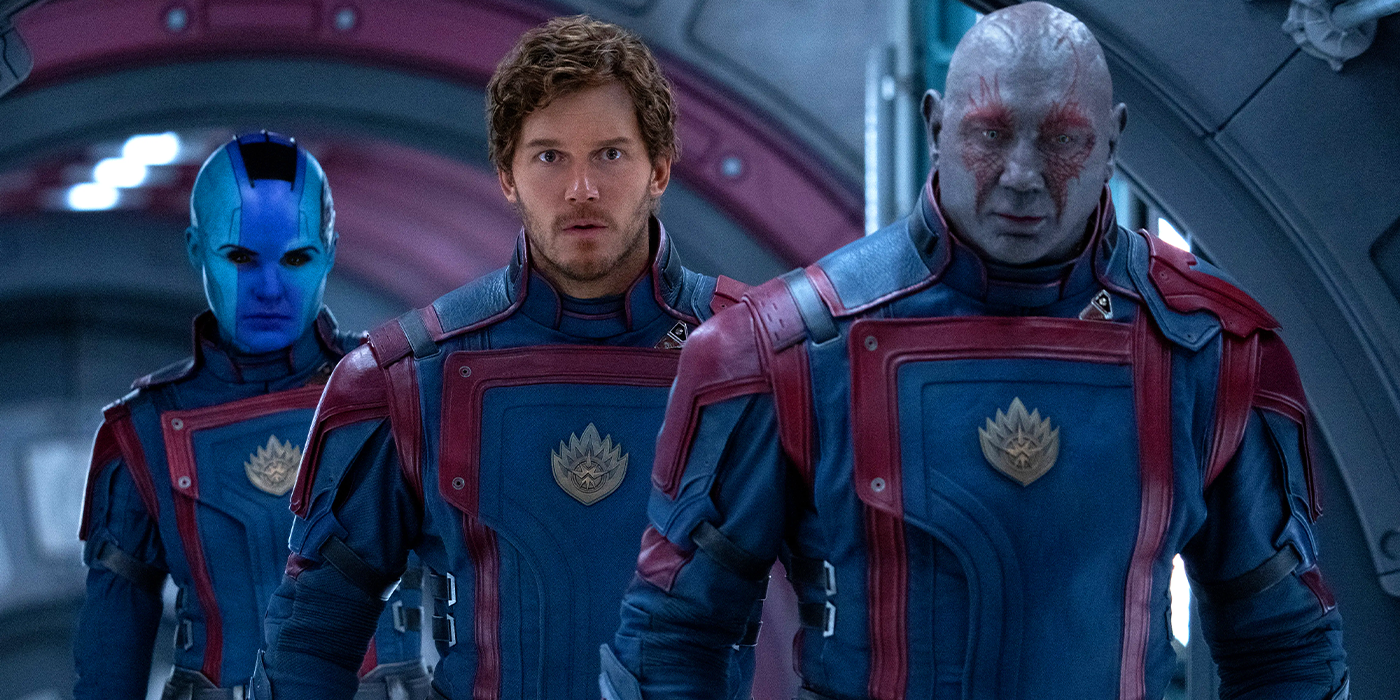Warning: Mild SPOILERS for Guardians of the Galaxy Vol. 3With Guardians of the Galaxy Vol. 3, James Gunn has arguably created one of the best start-to-finish movie trilogies ever made. As deep as their connections to the greater Marvel Cinematic Univeres are, the Guardians of the Galaxy films stand on their own as action comedies with just as much heart as humor. With Gunn now co-head of DC studios, Guardians of the Galaxy Vol. 3 marks the filmmaker’s last collaboration with Marvel, which proves to be a more-than-fitting end for Gunn’s journey with the studio.
While Guardians of the Galaxy Vol. 3 features a surprisingly full cast of returning characters, new faces behind the scenes helped to make it the success it is. One such member of the creative team is production designer Beth Mickle, who previously collaborated with Gunn on The Suicide Squad and will again on Superman: Legacy. Mickle helped to introduce some of the most unique locations seen in any Guardians of the Galaxy film while also expanding such well-trodden locations as Knowhere and giving the Guardians a new ship in the Bowie.
In honor of the film’s theatrical release, Beth Mickle spoke with Screen Rant about expanding the Guardians of the Galaxy universe, collaborating with James Gunn, and more.
Beth Mickle on Guardians of the Galaxy Vol. 3
Screen Rant: I’d love to know how you got involved with James Gunn. I know you did The Suicide Squad together, and you’re doing more after this; it seems like a good relationship.
Beth Mickle: I am just forever grateful for that turn of events in my life and my career. When James was initially hiring for Guardians 3 back in 2018, he was looking for wildcard production designer options and wanted to see who else was out there outside of the usual suspects who often do these movies. Mary Livanos at Marvel pitched me to him and said, “Here’s somebody that’s been on our radar. She did Drive with Nicolas Winding Refn, and some of Nicholas’ other work,” and that struck a chord with James.
We met; we had a fantastic first Skype call, and had lots to talk about, and lots of good laughs, and then the relationship just grew from there. I have to say that it is nothing short of monumental that he took a chance on me for Guardians. I come from doing independent film, I’m a woman production designer, and both independent film designers and female designers don’t often get a shot at doing these giant movies.
He took a great leap of faith by giving me a chance there and seeing if I could sink or swim. In doing that, it really did start to shift the tides on the faces and the names of the people who get to design these movies. I’m forever grateful for the opportunity, and for somebody in a position of power like he was to take a chance, it’s making a social change, and it’s important to be happening, and it’s great to be seen.
He seems like he would be a very specific filmmaker. What is your collaboration like, and how much do you get to bring in your own ideas?
Beth Mickle: He’s the best collaborator you could ask for, and I say that wholeheartedly. He comes with great parameters, and a great broad vision, and gives you fun rules to play within. A perfect example is the Orgoscope. He wanted it to be a biologically grown planet, but then he said, “Just go for it. Whatever you feel could be interesting, bring me ideas, and I want to see what you have.” Then, he really tunes in when you bring him material. We do these weekly reviews, and he really focuses on what you’re showing him.
He gives really clear and direct feedback. He knows what he likes, he knows what he doesn’t, and he really nudges you to go into places that production designers and costume designers wouldn’t normally go in. Judianna Makovski, my wonderful partner in crime [and] our costume designer, and I are always acknowledging that he really pushes you to dip a toe into things you normally wouldn’t consider. The results are always really exciting, unexpected, and brilliant. At the same time, he gives a lot of trust to his creative partners and lets us explore ideas, lets us try out things, and he’s always open-minded.
On Guardians. I knew that I was stepping into big shoes to fill with Charlie Wood, who came before me, Scott Chambliss, who came before me, who both did beautiful work on Guardians 1 and 2. I wanted to make sure I followed the beautiful design language that they laid out in those movies, but James, from very early on, really clearly said, “This is still your movie to design, and bring your vision to,” and “Don’t feel like you have to be beholden to anything,” and “Feel free to make this your own.”
That was such a generous way to approach it and a generous thing to say to me. And man, he meant it. He was just supportive the whole way through. He’s incredibly specific, and that, I think, is what makes him one of the most brilliant directors working today. It’s one of the reasons his movies are impeccable.
You mentioned the Orgocorp world, which is one of the things I wanted to ask you about. I love the pops of color in it. Parts of it are really beautiful, some of it’s a little gross, but in a cool, fun way. Where did you get your inspiration for that, and was there a challenge in putting it together?
Beth Mickle: He wanted every aspect of it to be biologically grown, all the way down to the suits that the guards are wearing, which are wonderfully comedic. A lot of that came down to what surfaces we could physically achieve with the materials that we had at hand, [and] with materials that you could find. The flesh was a challenge; we ended up doing that out of painted foam, and [we] did do some rubber to have some pliability here and there.
The flesh was definitely a challenge, but I feel like we landed in a good place there. Then, the bone also was something that was buildable and could be structural for architecture, and the white bone against the pink flesh made for a really, really beautiful and really striking, restricted color palette. I wanted to add a third color in, just to help add one more pop in there. We played with a lot of options, but this kind of amber yellow was a really beautiful mix in there, and so we decided to have that represent all of the biological fluid that is growing and nourishing this biological environment.
It’s really fun. It was one of the trickier sets to land on, we did a number of concepts for it and played with a number of ideas, but I’m really happy with where we landed. Again, that was James really pushing to take some wild swings.
The Guardians also have like a new ship in this one. What was putting that together like, especially in making it feel as authentic to the universe as possible?
Beth Mickle: We definitely take a look at the aesthetic and see, “What are the mechanical pieces and parts that you see? What has been established that we might want to carry through so that there is a slight familiarity to the ship?” At the same time, we also wanted to make sure that the overall form of it was wildly different from anything else we had seen in the Marvel universe before. That’s tricky because they have done a lot of spaceships, and it has to be a shape that could believably still fly.
James’ one note on that from the beginning was that it was a ship that Rocket built for the Guardians, so I wanted it to be something that kind of felt heavy-duty and mechanical. We ended up referencing hand tools, a bunch of power hand tools, for the shapes. It’s actually a circular saw that that’s based on. If you look at a circular saw, you’ll see exactly how a circular saw is the base of the body of the spaceship. I should also give a shout-out to Fausto De Martini; he was our brilliant concept artist that worked with me on the different tool shapes to figure out which one could work best for the exterior on that.
It was [all about] trying to figure out how we could be different from the others but still land in some kind of a familiar language that fit within the world. The other aspect I loved on that was the color. I wanted it to be vibrant, and pop, and be unlike any other special color we’d seen before, and so I was really happy when we landed on that bright vivid turquoise with that raspberry pink striping through it. It was a really fun color combination I feel like we haven’t seen before.
I understand a lot of the sets are maybe more practical than people would expect, but there are also a lot of CGI characters, CGI things happening, and some CGI sets. What is it like to create a look that is unified across like actual photography that will still look good when VFX elements are added later?
Beth Mickle: We were really adamant on this: that the art department was engaged with the visual effects department on all of the conceptual design of the elements that were going to be done in VFX. The VFX team were just absolutely fabulous partners for us throughout the whole process, with Stephane Ceretti and Susan Pickett. We would go to them every week as we were starting to near the end of the project and say, “Okay, what else do you guys need concept imagery for?” so that everything that they were going to be doing in post a year later would still follow the visuals that we were trying to adhere to throughout the movie.
We’re also just so lucky; they, I think, did the most spectacular visual effects work I have ever seen in a film, and I’ve had a number of people echo that back. I feel like they did phenomenal justice to the vision that we all spoke about a year and a half ago. I would love to actually run back to one of the other things you did say. It was true; [for] every scene, we were in a physically built space, which is really exciting. It’s really important to James that there are walls around, it’s important to the actors that they’re not working in these big blue voids, and so rarely were we on a set that didn’t have walls at least in a few directions for them to shoot into.
[With] the Arête hanger, for example, we built one whole big long wall and a floor. Then, visual effects finished the other walls, but they scanned the walls that we had built so that it felt like it was all a continuation of architecture that already existed, and I think that really helps for the visual effects to be successful.
Was that the biggest set you built for this?
Beth Mickle: The biggest set would be Knowhere.
Oh, yeah.
Beth Mickle: Yeah, that’s a world [where] we opened with one long tracking shot [in] the opening of the movie. We filled a 40,000-square-foot stage built up to four stories tall. In a handful of shots, sure, they tilt and look up to the sky, and that’s where you can see visual effects do this magnificent job of extending the world up to infinity and beyond, quite literally, but pretty much everything that’s down at eye level was physically built walls. We kept saying “Marvel should turn this into a theme park. Just keep it on stage; people would come and hang out. We could open up that or [the] Orloni lizard shack and turn it into a fast food joint. People would totally come and eat here.”
As you were saying that, I was thinking “All I want to do is walk around that set.” Is there a detail or an aspect of a set that you are really proud of or excited about that is kind of just part of the background?
Beth Mickle: That’s a great question. In fact, in a lot of Knowehre, all of those surfaces are just clad with texture and detail. That set was run by a fabulous female art director, Samantha Avila. She did such a great job with our assistant art directors sourcing found objects — literally going to Home Depot and [going] “Okay, what kind of crazy hosing is there? What kind of vents are there? What kind of floor plates that you put down for truck tires in a mechanic shop [are there]?” and getting all of these materials in.
We would spread them out in our department office, literally wall-to-wall, and everybody would go along and look, and pick out their favorite ones. Then we’d take them down to the scenic shop, and they’d paint them over, and we’d add different crackling paint and rough textures, and suddenly these things became otherworldly.
That was really exciting, just how creative you can get, and the creative problem-solving that can go into trying to figure out how to make an outer space planet. That, I was really excited about. These walls just look magnificent, and I’m so proud of the work that we did, yet you know that underneath, it’s Home Depot vents.
Because you’re also doing all this DC stuff with James, are there any Easter eggs from that world that made it into this movie?
Beth Mickle: Oh, what a good question. You know what? Actually, no. We love both worlds, both Marvel and DC, and since Suicide Squad was my first giant movie and my first time working with James, the art department had gotten me a little Starro stuffed animal from Suicide Squad, that they got me on Suicide Squad, and that still was sitting on my couch when we were in Marvel, which was really sweet. But just the same, I’m going to have a little stuffed Rocket and a little Groot on my desk when I’m [making] Superman. I love them all.
As someone who has worked on this movie pretty much from start to finish, and seen how everything is made, do you still cry when you watch it like the rest of us?
Beth Mickle: Absolutely. Oh my gosh. Judianna and I sat next to each other for the premiere and we were passing tissues back and forth. The baby animals get me every single time, and at the end, the Florence and the Machine sequence — just tears. Also, too, I have to say this: my husband Russell was sitting with me as well.
This project was such a long journey that we all started in 2018 together, and it is by far and away the biggest undertaking in my career, and the found family that we had on it was so incredible, so talented, [and] so special. As soon as the shot opened on Rocket, sitting, listening to the music, and you pull back and you start to just see little bits of this world around him, tears literally leapt from my eyes.
It was so emotionally overwhelming, and gratifying, and uplifting to see it, and to know that we were all a part of it. Again, going back to being one of the few women who have been lucky enough to do these movies, I felt wildly humbled and enormously proud to have been a part of it in the way that I was.
Also check out behind-the-scenes production design photos, courtesy of Marvel Studios:
About Guardians of the Galaxy Vol. 3
In the final chapter of the trilogy, the Guardians of the Galaxy are adjusting to life on Knowhere while Peter Quill is still reeling from the loss of Gamora. When a new threat from Rocket’s past resurfaces, Peter rallies the Guardians to save one of their own and once again protect the universe. However, failure could mean the end of the Guardians of the Galaxy.
Check out our other Guardians of the Galaxy Vol. 3 interviews below:
Guardians of the Galaxy Vol. 3 is in theaters now.

